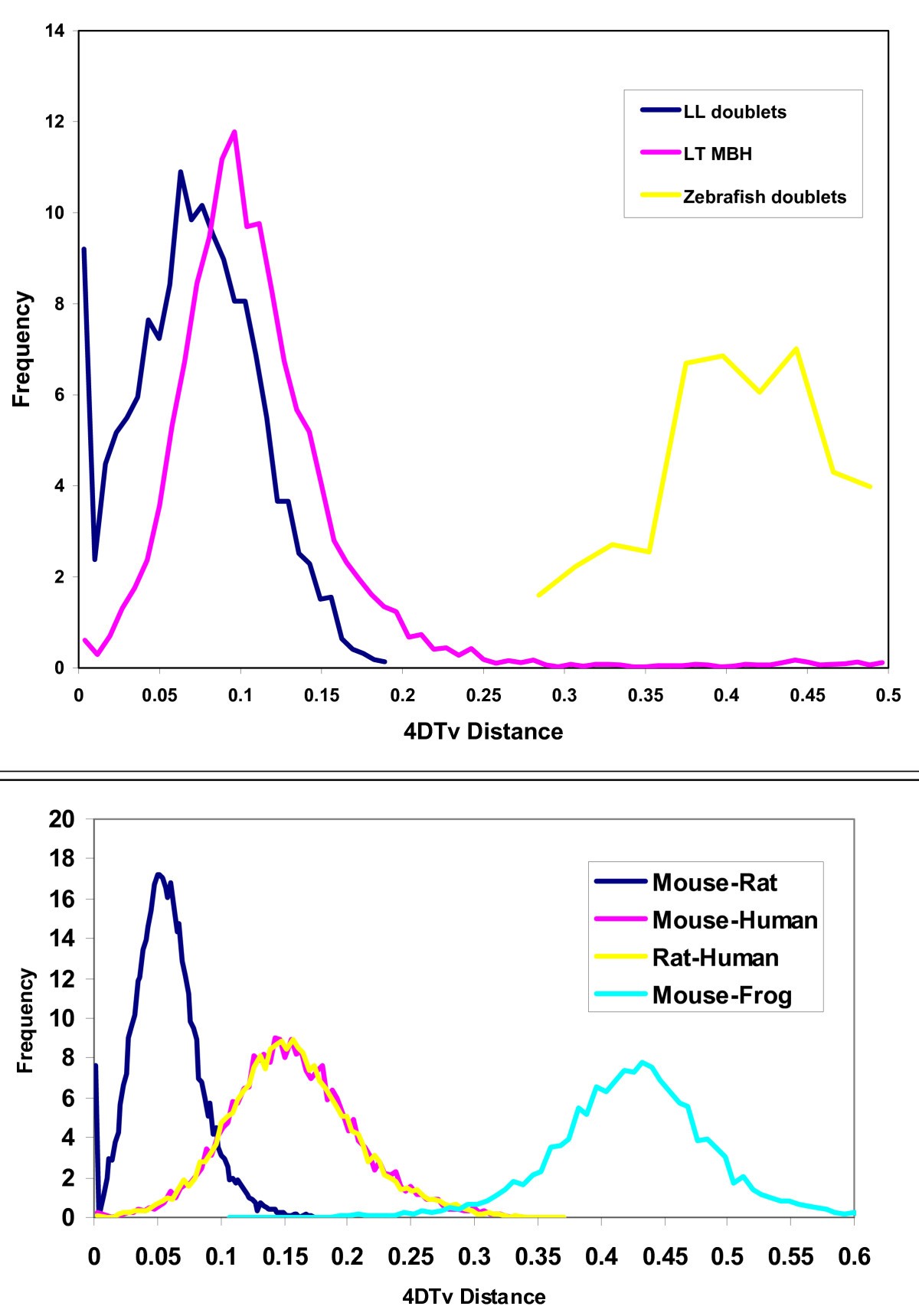XB-IMG-83446
Xenbase Image ID: 83446

|
Figure 1. Four-fold synonymous transversion rates. (a) X. tropicalis-X. laevis mutual-best hits (LT MBH) show 4 DTv distances sharply peaked around 0.09 corresponding to the species divergence. The few hits in the high-end tail (4 DTv > 0.2) are due to the incompleteness of the gene sets and/or gene losses. The line marked LL doublets shows two-member clusters of recent (4 DTv < 0.15) X. laevis paralogs. Assuming uniform transversion rates across vertebrates, and dating the last common human-mouse ancestor at 75 Mya, the laevis-tropicalis and laevis-laevis divergence is ~50 and ~40 Mya, respectively. For comparison, paralogs from the much more ancient teleost duplication in zebrafish are also shown. After correcting for multiple transversions, the fish duplication is about eight times older than the X. laevis event, consistent with timings based on total synonymous substitution rates [13,14]. (b) 4 DTv distributions for orthologs in mouse-rat (red), mouse-human (blue), rat-human (green), and mouse-X. tropicalis (purple). Only orthologs supported by conserved synteny are considered. Using the same molecular clock as panel (a), the mammal-frog divergence is 350 Mya. Image published in: Hellsten U et al. (2007) Copyright © 2007 Hellsten et al; licensee BioMed Central Ltd. Creative Commons Attribution license Larger Image Printer Friendly View |
